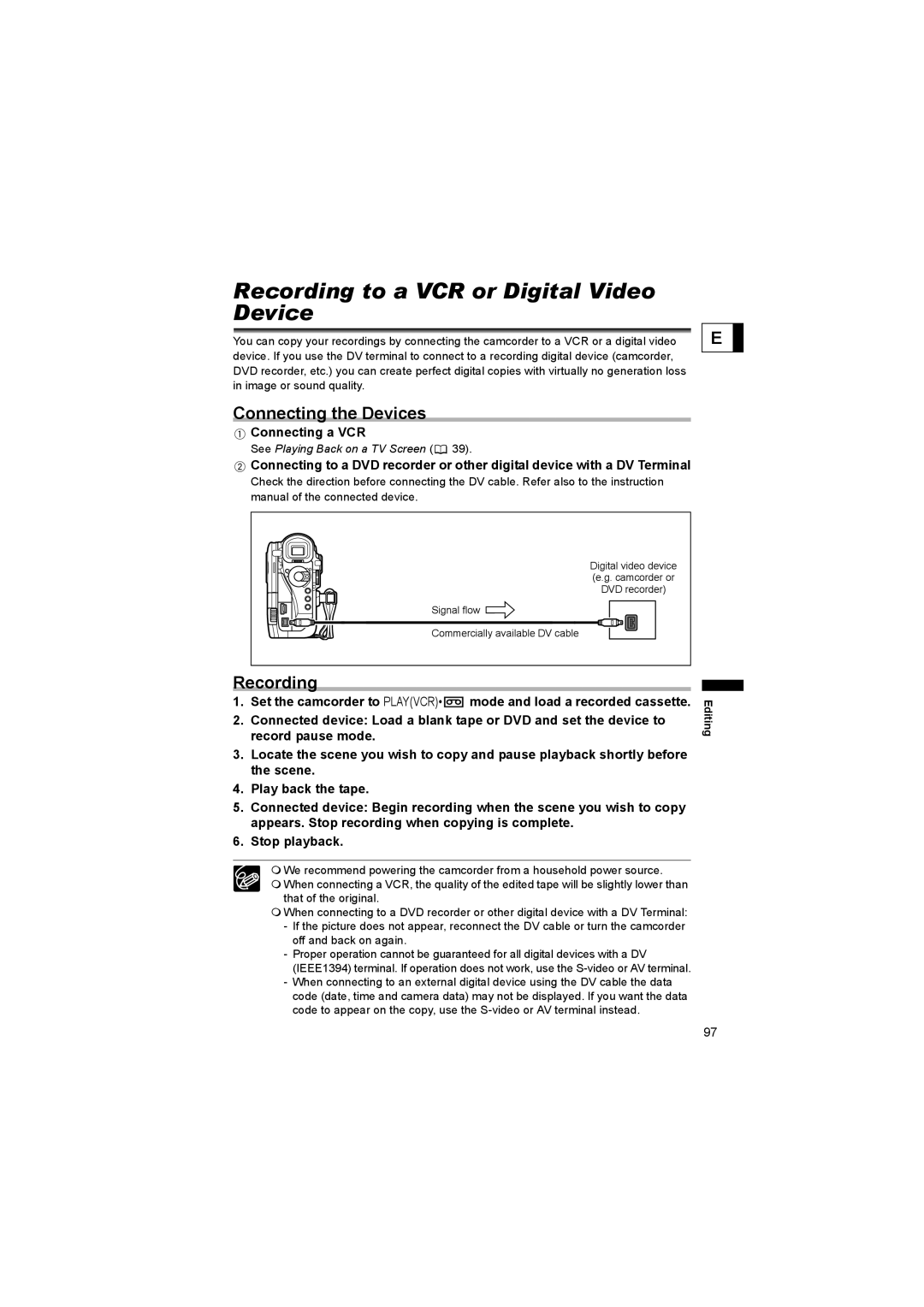
Recording to a VCR or Digital Video Device
You can copy your recordings by connecting the camcorder to a VCR or a digital video device. If you use the DV terminal to connect to a recording digital device (camcorder, DVD recorder, etc.) you can create perfect digital copies with virtually no generation loss in image or sound quality.
E
Connecting the Devices
 Connecting a VCR
Connecting a VCR
See Playing Back on a TV Screen (![]() 39).
39).
![]() Connecting to a DVD recorder or other digital device with a DV Terminal
Connecting to a DVD recorder or other digital device with a DV Terminal
Check the direction before connecting the DV cable. Refer also to the instruction manual of the connected device.
Digital video device |
(e.g. camcorder or |
DVD recorder) |
Signal flow |
Commercially available DV cable |
Recording |
1.Set the camcorder to PLAY(VCR)•![]() mode and load a recorded cassette.
mode and load a recorded cassette.
2.Connected device: Load a blank tape or DVD and set the device to record pause mode.
3.Locate the scene you wish to copy and pause playback shortly before the scene.
4.Play back the tape.
5.Connected device: Begin recording when the scene you wish to copy appears. Stop recording when copying is complete.
6.Stop playback.
We recommend powering the camcorder from a household power source.
When connecting a VCR, the quality of the edited tape will be slightly lower than that of the original.
When connecting to a DVD recorder or other digital device with a DV Terminal:
-If the picture does not appear, reconnect the DV cable or turn the camcorder off and back on again.
-Proper operation cannot be guaranteed for all digital devices with a DV (IEEE1394) terminal. If operation does not work, use the
-When connecting to an external digital device using the DV cable the data code (date, time and camera data) may not be displayed. If you want the data code to appear on the copy, use the
Editing
97
